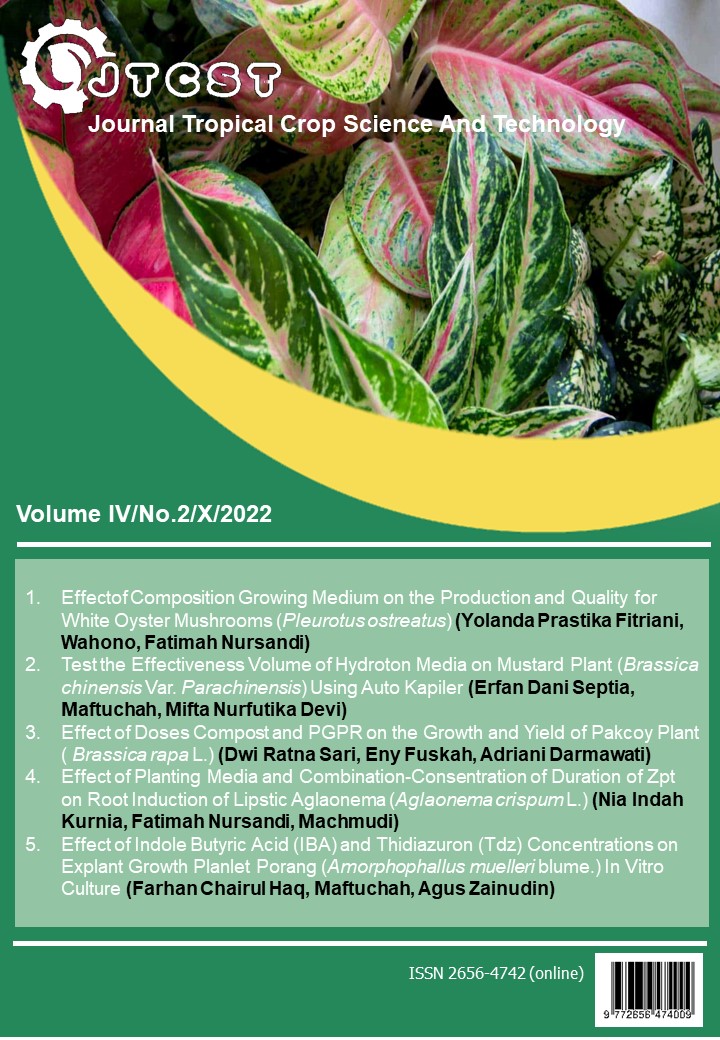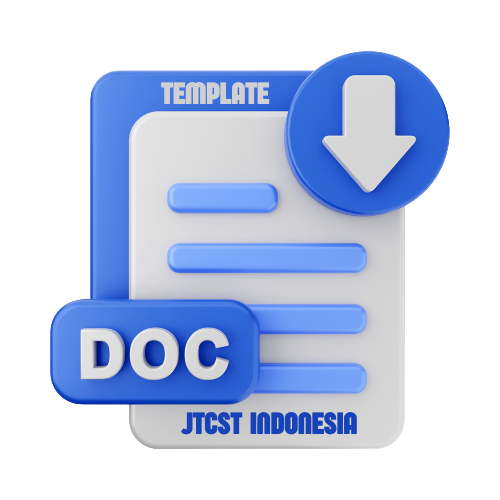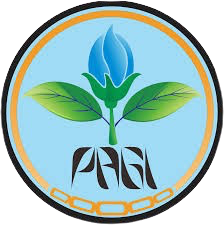Effect of Planting Media and Duration of PGR Concentration on Root Induction in Lipstick Aglaonema (Aglaonema crispum L.)
DOI:
https://doi.org/10.22219/jtcst.v4i2.32483Keywords:
Auxin, Export, CuttingsAbstract
This study examined the effect of growing media and the combination of PGR concentration and soaking time on root induction in Lipstick Aglaonema (Aglaonema crispum L.). The study aimed to evaluate the interaction between growing media and the combination of PGR concentration and soaking time on root induction in Lipstick Aglaonema, as well as to identify the optimal growing medium that meets export standards for this plant. The experimental design used was a Factorial Randomized Block Design (RBD), where factor 1 was the combination of PGR concentration and soaking time: K1 (water), K2 (Atonik 2 ml/l for 20 minutes), K3 (Rootone-F 200 mg/l for 1 hour), K4 (Prokar PGR 10 ml/l for 15 minutes), K5 (Prokar PGR 10 ml/l for 30 minutes), and K6 (Prokar PGR 10 ml/l for 45 minutes). The second factor was the growing media: M1 (a mix of manure, cocopeat, soil, rice husk, and charcoal), and M2 (a mix of cocopeat and rice husk charcoal). There was an interaction between the growing media and the PGR concentration and soaking time on leaf area and stem diameter parameters. The longer soaking treatments using Prokar PGR for 15 and 30 minutes were more effective for enhancing the growth of Lipstick Aglaonema cuttings in terms of the number of roots and root length. However, the growing media did not significantly affect all observed parameters.
Downloads
Downloads
Published
How to Cite
Issue
Section
License
Copyright (c) 2022 Nia Indah Kurnia, Fatimah Nursandi, machmudi

This work is licensed under a Creative Commons Attribution-ShareAlike 4.0 International License.
Authors who publish with this journal agree to the following terms:
- Authors retain copyright and grant the journal right of first publication with the work simultaneously licensed under a Creative Commons Attribution License that allows others to share the work with an acknowledgement of the work's authorship and initial publication in this journal.
- Authors are able to enter into separate, additional contractual arrangements for the non-exclusive distribution of the journal's published version of the work (e.g., post it to an institutional repository or publish it in a book), with an acknowledgement of its initial publication in this journal.
- Authors are permitted and encouraged to post their work online (e.g., in institutional repositories or on their website) prior to and during the submission process, as it can lead to productive exchanges, as well as earlier and greater citation of published work (See The Effect of Open Access).











